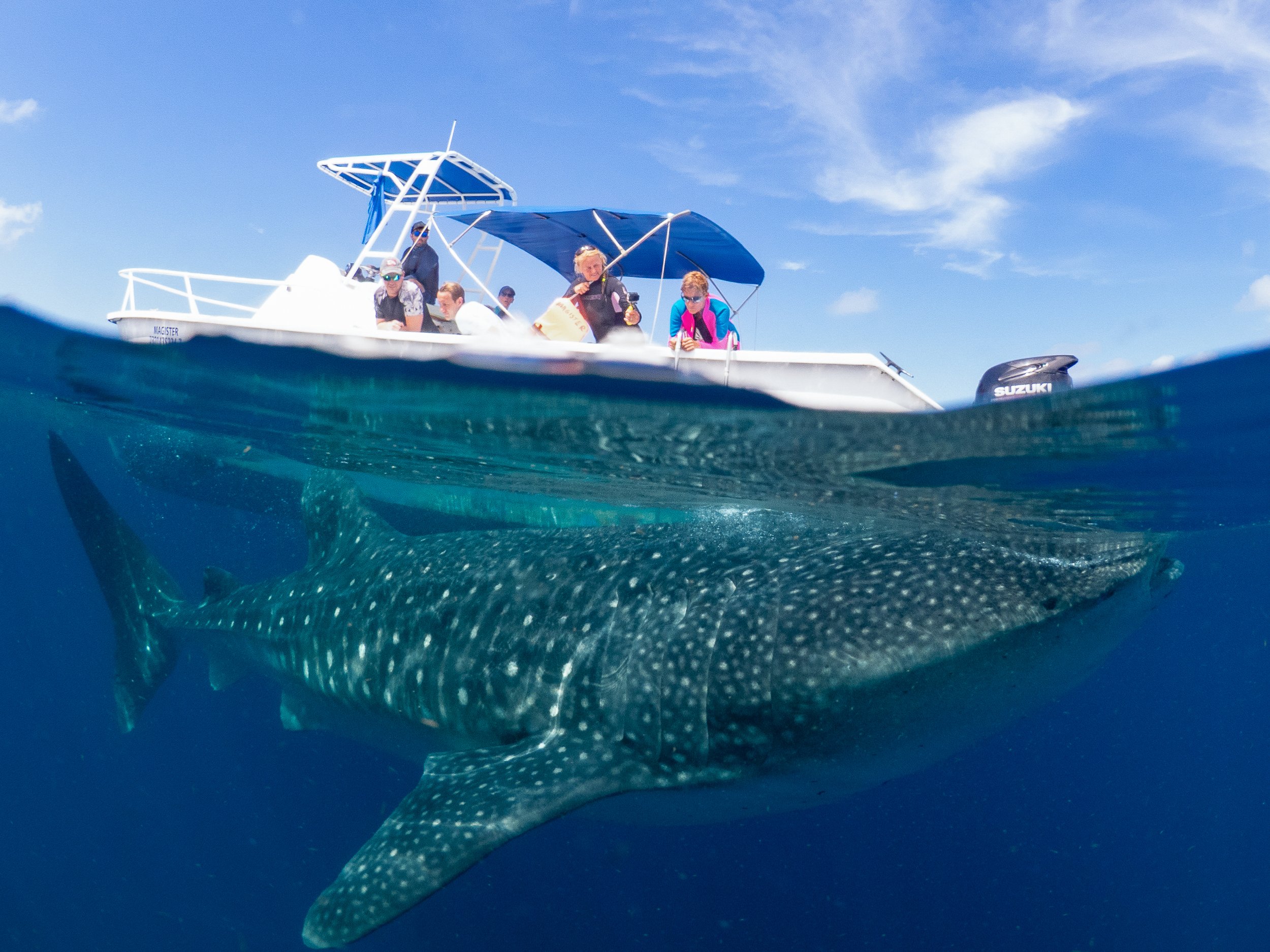Global Whale Shark Program
The Mozambique Whale Shark Project
What’s this project about?
The southern Mozambique coast hosts one of the world’s most important whale shark feeding areas.
Our pioneering work in the country focuses on monitoring populations of these endangered giants, developing sustainable shark ecotourism, and identifying and addressing the species’ conservation needs.
Key successes to date:
MMF’s extensive research and lobbying in Mozambique was a major factor that led to the legal protection of whale sharks by the Mozambican government in January 2021.
We established multiple IUCN Important Shark & Ray Areas in Mozambique
MMF’s whale shark photo-ID databases are the largest and longest-running in Africa.
MMF researchers have authored 15 peer-reviewed scientific papers, two PhD theses, and an MSc thesis on whale sharks in Mozambique.
MMF has contributed to the current management plans for several marine protected areas, including the Bazaruto Archipelago National Park in Mozambique.
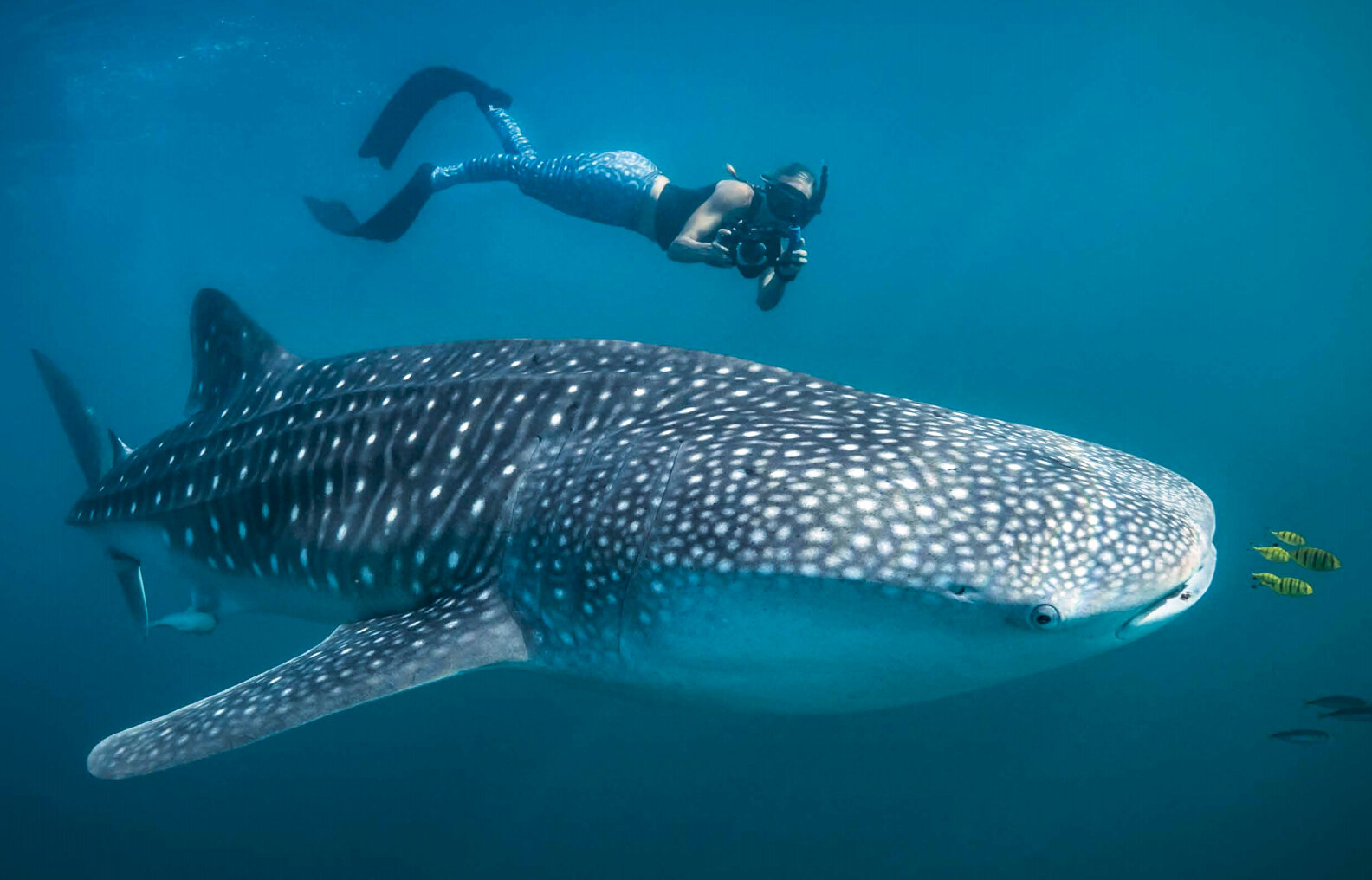
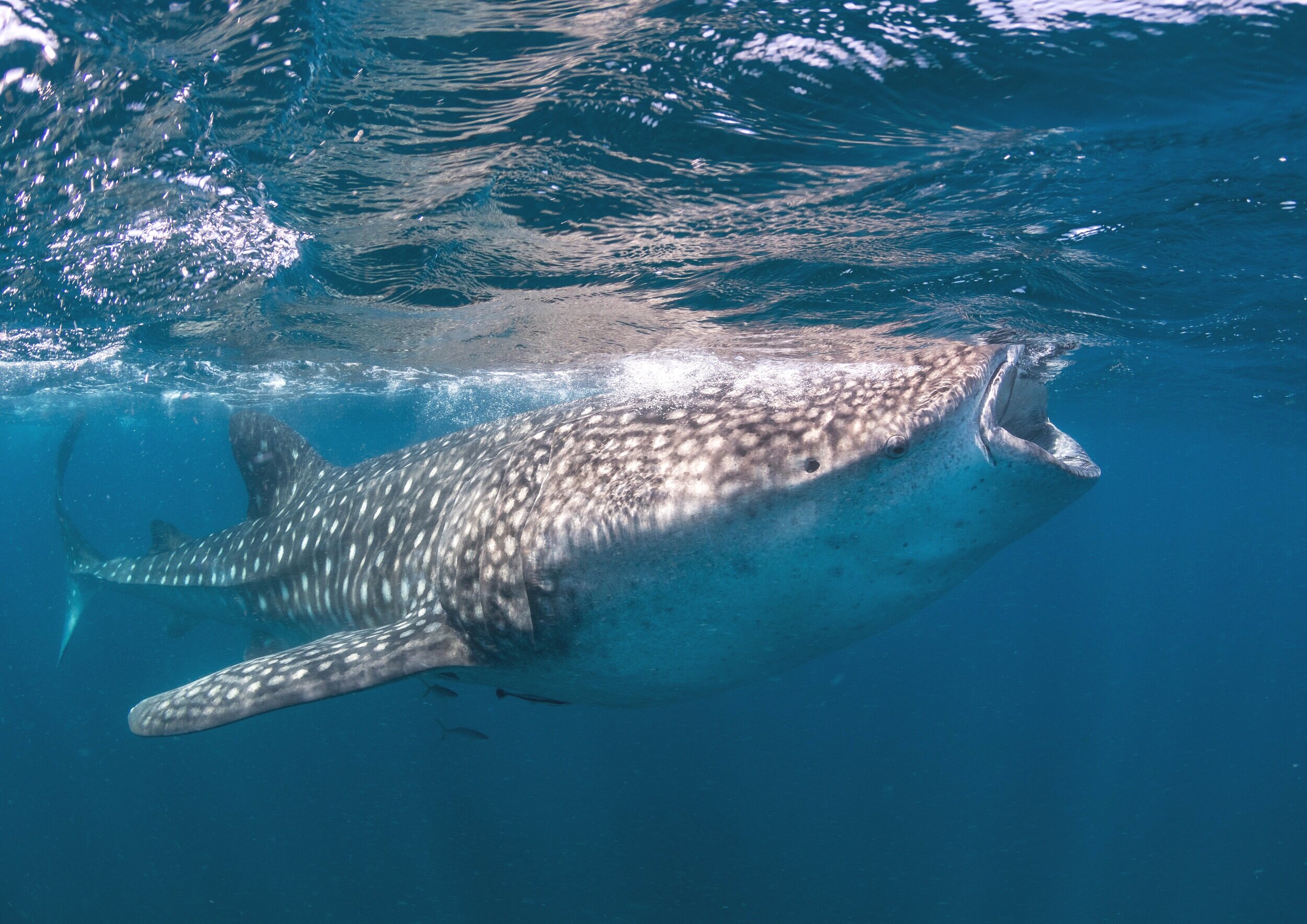
Project Overview.
Mozambique Whale Sharks.
Southern Mozambique is a global center of abundance for whale sharks, the world’s largest fish. Since 2005 we have documented the largest identified populations of these endangered giants in Africa. The highest sightings are recorded along the coast of the Inhambane Province, which provides an important feeding area for juvenile whale sharks. In 2021, the species received full legislative protection in Mozambique.
Whale Sharks in Mozambique
Our now-global research on whale sharks began in Mozambique in 2005, and MMF’s early work in the Inhambane Province pioneered many of the research techniques that are now in everyday use around the world. Photo-identification has been used to count over 600 whale sharks in Inhambane waters, with some individuals having been resighted in South Africa and north in Tanzania. Our satellite-tracking work has shown that whale sharks preferentially use the productive coastal waters from the Bazaruto Seascape south to Zavora, with some individuals returning for many years to this important feeding area.
Conservation & Management Efforts
A substantial decline in whale shark sightings over the course of MMF’s work on the species highlighted the urgent need for conservation assessment and planning. These efforts have included the global listing of the whale shark as an Endangered species on the IUCN Red List, based partly on MMF’s Mozambique research, and MMF led the subsequent technical proposal that successfully uplisted whale sharks to Appendix I on the UN Convention on Migratory Species, conferring a responsibility on range states to fully protect the species and its important habitats. Whale sharks received full legislative protection in Mozambique in 2021.
Ongoing work in Mozambique is now focused on population monitoring and threat assessment to ensure MMF conservation efforts continue to support the recovery of the regional whale shark population.
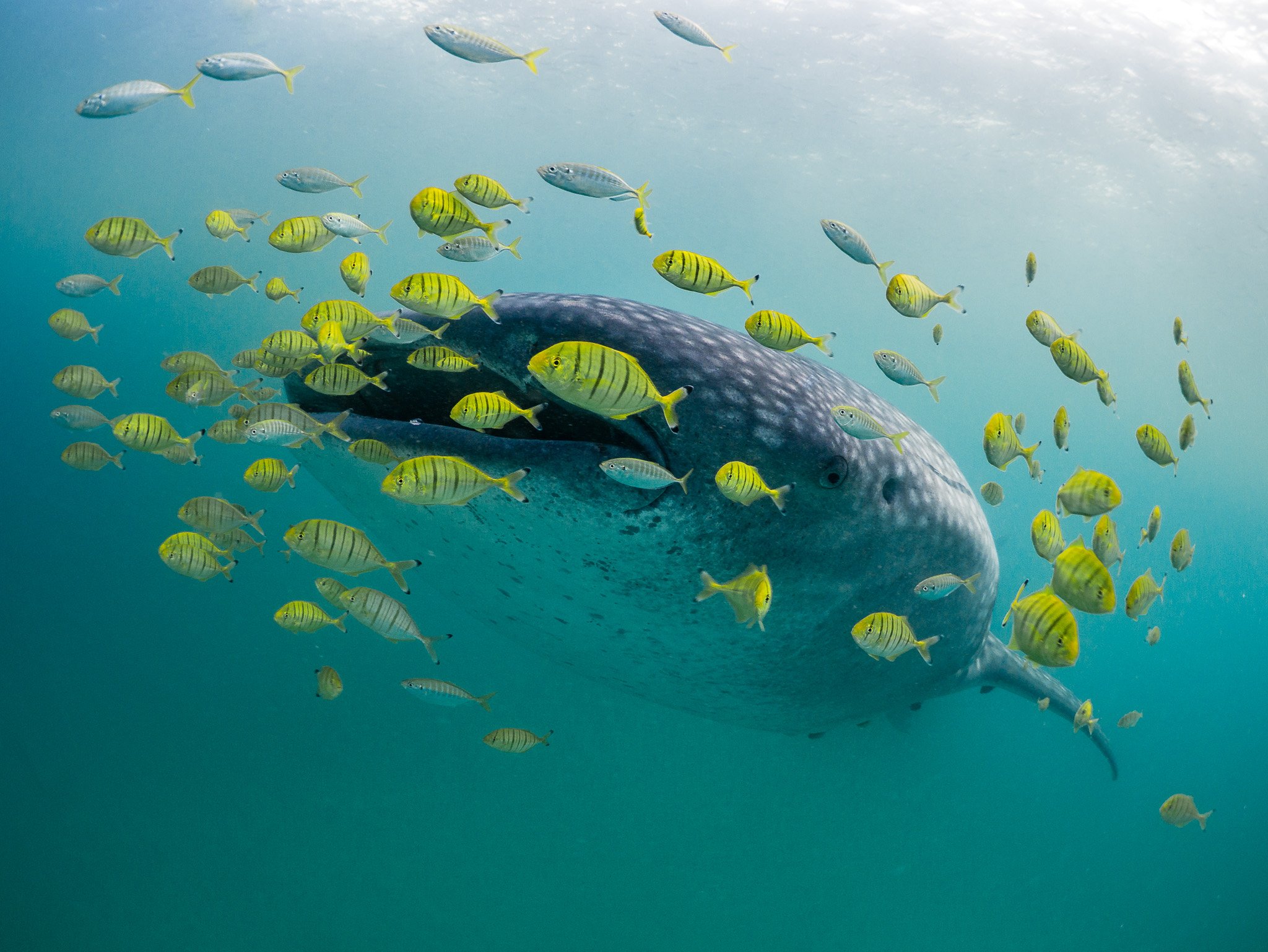
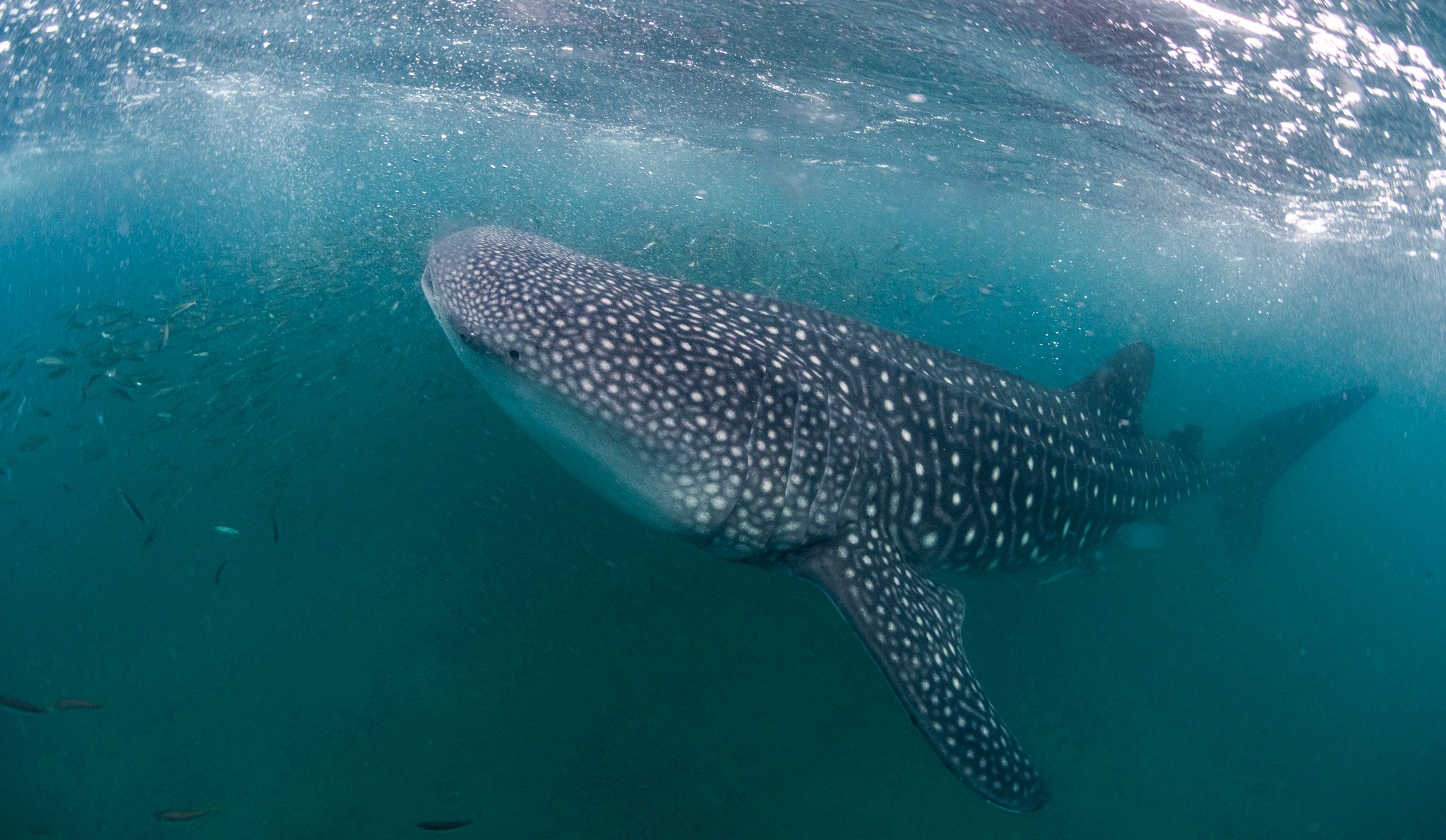
MMF Project Team
-

Dr Clare Prebble
PRINCIPAL SCIENTIST
Dr Clare Prebble has pioneered the emerging field of biochemical ecology and its application to movement and feeding studies, completing her PhD on whale sharks in 2018.
-

Dr Chris Rohner
PRINCIPAL SCIENTIST
Dr Chris Rohner completed his PhD on whale sharks in 2012, the first doctoral study on the species in Africa. Chris is an international expert in satellite tracking, population modeling, and shark ecology.
-

Dr Simon Pierce
CO-FOUNDER / PRINCIPAL SCIENTIST
Dr Simon Pierce is a pioneering researcher and global leader in whale shark conservation. Simon co-authored the first-ever scientific textbook on whale sharks in 2021, led the recent global conservation assessment of the species, and serves as a member of the IUCN Shark Specialist Group.
Media
iAfrica. Manta Rays and Whale Sharks are Now Protected by Law in Mozambique
AllAfrica. Mozambique: New Legislation Protects Whale Sharks and Manta Rays
Oceanographic Mag. Manta rays and whale sharks now protected by new commercial fishing law in Mozambique
Seven Seas Media. Inhambane Seascape in Mozambique Recognized as Mission Blue Hope Spot
Dive Magazine. Inhambane Seascape in Mozambique Recognized as Mission Blue Hope Spot
Mongabay. Mozambique’s new fisheries law expands protections but old problems persist
Funders
Aqua-Firma
Shark Foundation
Waterlust
Publications
Improving sightings-derived residency estimation for whale shark aggregations: A novel metric applied to a global data set. Araujo G, Agustines A, Bach SS, et al. Frontiers in Marine Science.
Global collision-risk hotspots of marine traffic and the world’s largest fish, the whale shark. Womersley FC, Humphries NE, Queiroz N, et al. Proceedings of the National Academy of Sciences.
Regional variation in anthropogenic threats to Indian Ocean whale sharks. Reynolds SD, Norman BM, Franklin CE, et al. Global Ecology and Conservation.
Global spatial risk assessment of sharks under the footprint of fisheries. Queiroz, N., Humphries, N.E., Couto, A. et al. Nature 572.
Limited latitudinal ranging of juvenile whale sharks in the Western Indian Ocean suggests the existence of regional management units. Prebble CEM, Rohner CA, Pierce SJ, et al. Marine Ecology Progress Series 601: 167-183.
Satellite tagging highlights the importance of productive Mozambican coastal waters to the ecology and conservation of whale sharks. Rohner CA, Richardson AJ, Jaine FRA, et al. PeerJ.
iDNA at Sea: Recovery of whale shark (Rhincodon typus) mitochondrial DNA sequences from the whale shark copepod (Pandarus rhincodonicus) confirms global population structure. Meekan M, Austin CM, Tan MH, et al. Frontiers in Marine Science.
Undersea constellations: The global biology of an endangered marine megavertebrate further informed through citizen science. Norman BM, Holmberg JA, Arzoumanian Z, et al. BioScience. 67(12): 1029–1043.
The ecological connectivity of whale shark aggregations in the Indian Ocean: A photo-identification approach. Andrzejaczek S, Meeuwig J, Rowat D, et al. Royal Society Open Science.
Laser photogrammetry improves size and demographic estimates for whale sharks. Rohner CA, Richardson AJ, Prebble CEM, et al. PeerJ.
Monitoring the effects of tourism on whale shark Rhincodon typus behaviour in Mozambique. Haskell PJ, McGowan A, Westling A, et al. Oryx 49(3): 492-499.
Genetic structure of populations of whale sharks among ocean basins and evidence for their historic rise and recent decline. Vignaud TM, Maynard JA, Leblois R, et al. Molecular Ecology 23: 2590-2601.
Unusually high levels of n-6 polyunsaturated fatty acids in whale sharks and reef manta rays. Couturier LIE, Rohner CA, Richardson AJ, et al. Lipids 48: 1029-1034.
Trends in sightings and environmental influences on a coastal aggregation of manta rays and whale sharks. Rohner CA, Pierce SJ, Marshall AD, Weeks SJ, Bennett MB and Richardson AJ. Marine Ecology Progress Series 482: 153-168.
Diet of whale sharks Rhincodon typus inferred from stomach content and signature fatty acid analyses. Rohner CA, Couturier L, Richardson A, et al. Marine Ecology Progress Series 493: 219-235.
How large is the world’s largest fish? Measuring whale sharks Rhincodon typus with laser photogrammetry. Rohner CA, Richardson AJ, Marshall AD, Weeks SJ and Pierce SJ. Journal of Fish Biology 78: 378-385.
Seeing spots: Photo-identification as a regional tool for whale shark identification. Brooks K, Rowat D, Pierce SJ, D Jouannet and Vely M. Western Indian Ocean Journal of Marine Science 9: 185-194.
Developing a code of conduct for whale shark interactions in Mozambique. Pierce SJ, Méndez-Jiménez A, Collins K, Rosero-Caicedo M and Monadjem A. Aquatic Conservation: Marine & Freshwater Ecosystems 20: 782-788.
Deep-diving behaviour of a whale shark Rhincodon typus during long-distance movement in the western Indian Ocean. Brunnschweiler JM, Baensch H, Pierce SJ and Sims DW. Journal of Fish Biology 74: 706-714.
Is host ectoparasite load related to echeneid fish presence? Mucientes GR, Queiroz N, Pierce SJ, Sazima I & Brunnschweiler JM. Research Letters in Ecology.
Scarring patterns and relative mortality rates of Indian Ocean whale sharks. Speed CW, Meekan MG, Rowat D, Pierce SJ, Marshall AD and Bradshaw CJA. Journal of Fish Biology 72: 1488-1503.
